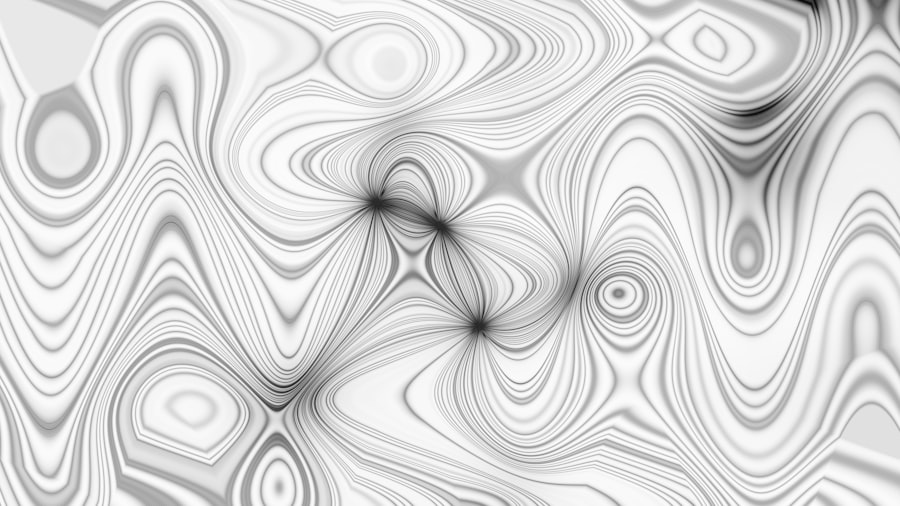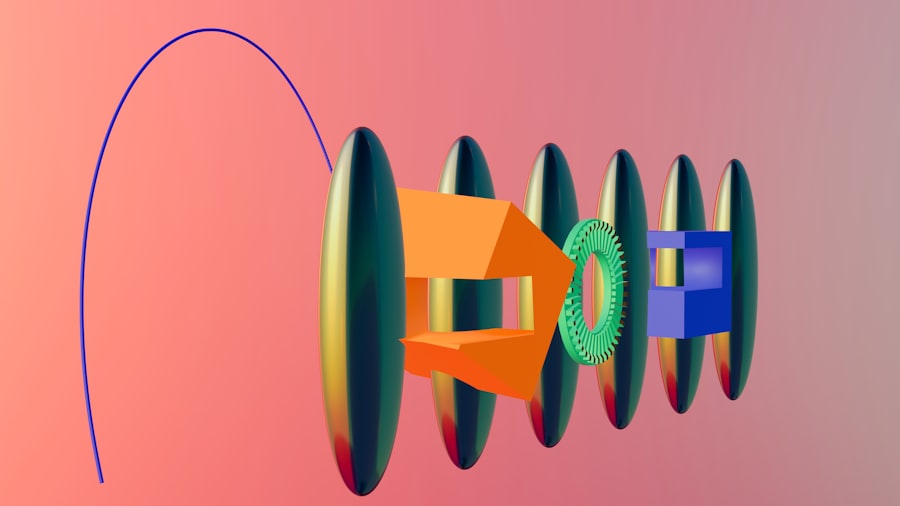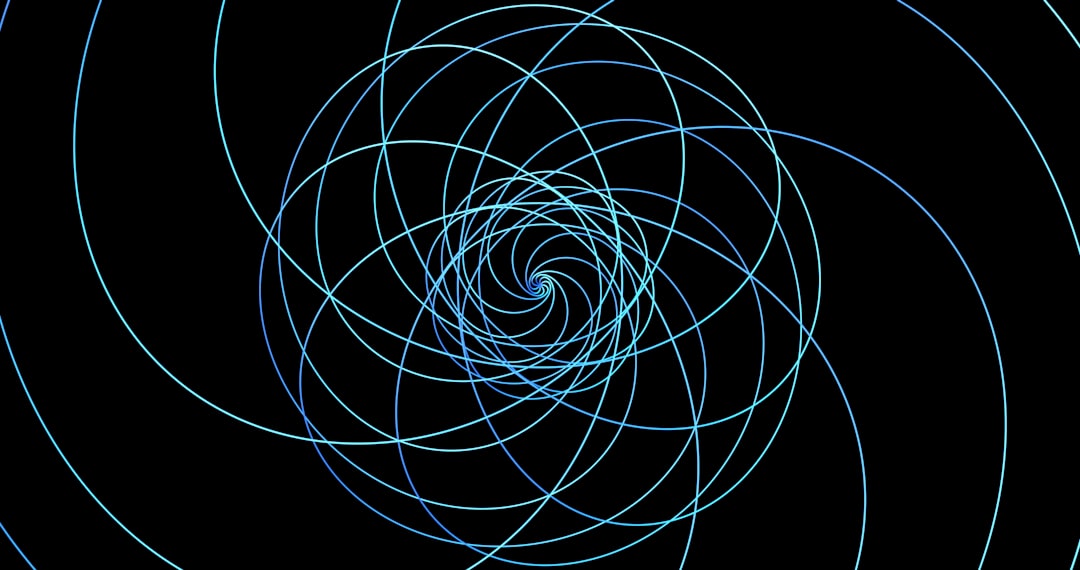Saturn, the sixth planet from the Sun, is renowned for its stunning and intricate ring system, which has captivated astronomers and space enthusiasts alike for centuries. These rings, composed primarily of ice particles, rocky debris, and dust, stretch out over 175,000 miles from the planet’s center, creating a breathtaking spectacle that is both beautiful and scientifically significant. The rings are not uniform; they vary in thickness and density, with some areas appearing more luminous than others.
This complexity has led to extensive research aimed at understanding their formation, structure, and the forces that govern their behavior. The rings of Saturn are not merely a visual wonder; they serve as a natural laboratory for studying planetary science. They provide insights into the processes that shape celestial bodies and the dynamics of gravitational interactions.
As researchers delve deeper into the mysteries of these rings, they uncover fascinating phenomena that challenge existing theories about planetary formation and evolution. Among these phenomena are the magnetic field kinks observed within the rings, which have sparked a wave of curiosity and investigation in the scientific community.
Key Takeaways
- Saturn’s rings are a fascinating feature of the planet, consisting of countless icy particles ranging in size from tiny grains to massive chunks.
- Magnetic fields play a crucial role in planetary science, influencing the behavior of charged particles and shaping the dynamics of planetary systems.
- Recent discoveries have revealed the presence of kinks in Saturn’s magnetic field within its rings, challenging previous understandings of the system.
- Theories and hypotheses surrounding the magnetic field kinks suggest possible interactions with Saturn’s moons, leading to complex and dynamic phenomena.
- Observations and data collected by spacecraft have provided valuable insights into the nature of the magnetic field kinks and their implications for planetary formation and evolution.
The Role of Magnetic Fields in Planetary Science
Magnetic fields play a crucial role in the field of planetary science, influencing everything from atmospheric dynamics to the behavior of charged particles in space.
This magnetic shield is essential for maintaining a planet’s atmosphere and can significantly impact its habitability.
For instance, Earth’s magnetic field protects it from harmful solar radiation, while planets like Mars, which lack a substantial magnetic field, have experienced significant atmospheric loss. In addition to their protective functions, magnetic fields can also affect the physical characteristics of planetary rings. The interaction between charged particles in the rings and the planet’s magnetic field can lead to various phenomena, including the formation of structures within the rings themselves.
Understanding these interactions is vital for comprehending not only Saturn’s rings but also the broader implications for other celestial bodies with ring systems. As scientists continue to explore these magnetic influences, they gain valuable insights into the fundamental processes that govern planetary systems.
Discovery of Magnetic Field Kinks in Saturn’s Rings

The discovery of magnetic field kinks within Saturn’s rings has opened up new avenues for research and understanding. These kinks are essentially distortions or irregularities in the magnetic field lines that permeate the rings. They were first detected by instruments aboard NASA’s Cassini spacecraft, which orbited Saturn from 2004 to 2017.
The data collected during this mission revealed unexpected variations in the magnetic field strength and direction within certain regions of the rings, prompting scientists to investigate further. The presence of these kinks suggests that there are complex interactions occurring between the magnetic field and the particles that make up the rings. Researchers have hypothesized that these interactions could be influenced by various factors, including the gravitational pull of Saturn’s moons and the dynamic nature of the ring particles themselves.
The discovery of these magnetic field kinks has not only added a layer of complexity to our understanding of Saturn’s rings but has also raised questions about their origins and implications for planetary science as a whole.
Theories and Hypotheses Surrounding the Magnetic Field Kinks
| Theories and Hypotheses | Explanation |
|---|---|
| Magnetic Reconnection | Proposes that the kinks in the magnetic field are caused by the breaking and reconnecting of magnetic field lines. |
| Magnetic Helicity | Suggests that the kinks are related to the twisting and linking of magnetic field lines, leading to the formation of kinks. |
| Magnetic Instabilities | Posits that the kinks are a result of instabilities in the magnetic field, leading to the formation of kinks and twists. |
As scientists have sought to explain the observed magnetic field kinks in Saturn’s rings, several theories and hypotheses have emerged. One prominent theory posits that these kinks may be caused by interactions between the ring particles and Saturn’s magnetic field, leading to localized disturbances in the magnetic lines. This interaction could result from variations in particle density or size within specific regions of the rings, creating areas where the magnetic field is distorted.
Another hypothesis suggests that the gravitational influence of Saturn’s moons plays a significant role in shaping these kinks. The moons exert tidal forces on the ring particles, which could lead to fluctuations in their distribution and density. This gravitational interaction may create conditions conducive to the formation of magnetic field irregularities.
Additionally, researchers are exploring the possibility that electromagnetic forces generated by charged particles within the rings could contribute to these kinks, further complicating our understanding of their origins.
The Connection Between Magnetic Field Kinks and Saturn’s Moons
The relationship between Saturn’s moons and the magnetic field kinks observed in its rings is a subject of intense study. Saturn boasts a diverse array of moons, each with its own unique characteristics and gravitational influences on the ring system. Some moons, such as Enceladus and Mimas, are particularly noteworthy due to their proximity to the rings and their potential impact on ring dynamics.
Researchers have proposed that gravitational interactions between these moons and the ring particles could lead to localized disturbances in both particle distribution and magnetic field strength. For instance, as a moon passes near a section of the rings, its gravitational pull may cause particles to clump together or disperse, resulting in variations in density that could manifest as magnetic field kinks. This connection highlights the intricate interplay between celestial bodies within Saturn’s system and underscores the importance of considering multiple factors when studying planetary phenomena.
Observations and Data Collected by Spacecraft

The Cassini spacecraft provided an unprecedented wealth of data regarding Saturn’s rings and their associated magnetic fields during its mission. Equipped with advanced instruments capable of measuring magnetic fields, particle distributions, and other relevant parameters, Cassini was able to capture detailed observations that have significantly advanced scientific understanding. The spacecraft’s close encounters with both Saturn and its rings allowed researchers to gather high-resolution data on magnetic field variations across different regions.
In addition to Cassini’s contributions, other missions have also played a role in enhancing knowledge about Saturn’s rings. Ground-based telescopes and other space missions have complemented Cassini’s findings by providing additional perspectives on ring dynamics and structure. The combination of data from various sources has enabled scientists to develop more comprehensive models that account for both magnetic field kinks and their potential causes.
Implications for Understanding Planetary Formation and Evolution
The study of magnetic field kinks in Saturn’s rings carries significant implications for understanding planetary formation and evolution. These kinks may provide clues about the processes that govern ring dynamics and particle interactions over time. By examining how these magnetic irregularities form and evolve, researchers can gain insights into the conditions present during the early stages of planetary development.
Furthermore, understanding how magnetic fields influence ring systems can shed light on similar processes occurring in other celestial bodies throughout the universe. For instance, many exoplanets are believed to possess ring systems or similar structures influenced by their own magnetic fields.
Potential Applications for Understanding Other Planetary Systems
The insights gained from studying Saturn’s rings and their associated magnetic field kinks extend beyond our solar system. As astronomers discover new exoplanets with diverse characteristics, understanding how magnetic fields interact with ring systems becomes increasingly relevant. The principles derived from Saturn’s rings can be applied to analyze other planetary systems that exhibit similar features.
For example, researchers can use knowledge about magnetic field interactions to predict how ring systems around exoplanets might behave under different gravitational influences or environmental conditions. This understanding could inform future observations aimed at characterizing exoplanetary systems more accurately. By drawing parallels between Saturn’s rings and those found around distant worlds, scientists can enhance their ability to interpret data collected from telescopes observing these far-off systems.
Collaborative Efforts in Studying Saturn’s Rings Mystery
The investigation into Saturn’s rings and their magnetic field kinks has fostered collaborative efforts among scientists across various disciplines. Researchers from astrophysics, planetary science, and space engineering have come together to share insights and expertise in tackling this complex puzzle. Collaborative projects often involve pooling resources from different institutions, allowing for more comprehensive studies that leverage diverse methodologies.
These collaborative efforts have led to innovative approaches in data analysis and modeling techniques aimed at deciphering the intricacies of Saturn’s rings. By working together, scientists can combine theoretical frameworks with empirical data to develop more robust explanations for observed phenomena. This interdisciplinary approach not only enhances understanding but also encourages knowledge sharing that can benefit future research endeavors.
Future Research and Exploration of Saturn’s Rings
Looking ahead, future research on Saturn’s rings promises to yield even more exciting discoveries regarding their structure and behavior. As technology advances, new missions may be launched to explore Saturn’s system further or revisit previous findings with enhanced instruments capable of capturing finer details. Such missions could focus on obtaining high-resolution images or conducting detailed measurements of magnetic fields within specific regions of the rings.
Additionally, ongoing analysis of existing data from Cassini will continue to provide valuable insights into previously unexplored aspects of Saturn’s rings. Researchers will likely delve deeper into understanding how magnetic field kinks evolve over time or how they interact with other dynamic processes occurring within the ring system. The quest for knowledge surrounding these enigmatic features is far from over; rather, it is an evolving journey that holds great promise for future discoveries.
Conclusion and Final Thoughts on the Magnetic Field Kinks in Saturn’s Rings
In conclusion, the study of magnetic field kinks within Saturn’s rings represents a fascinating intersection of planetary science and astrophysics. These irregularities not only challenge existing theories but also provide valuable insights into the complex interactions between celestial bodies within our solar system. As researchers continue to investigate these phenomena through collaborative efforts and advanced technologies, they will undoubtedly uncover new layers of understanding regarding both Saturn’s rings and broader planetary processes.
The implications extend beyond our immediate solar system; they offer a glimpse into how similar mechanisms might operate in distant exoplanetary systems as well. As scientists strive to unravel this cosmic mystery, they contribute to a growing body of knowledge that enhances humanity’s understanding of its place in the universe—a journey marked by curiosity, collaboration, and discovery that will continue for generations to come.
Recent studies have revealed intriguing insights into the magnetic field kinks within Saturn’s rings, shedding light on the complex interactions between the planet’s magnetic field and its iconic ring system. For a deeper understanding of these phenomena, you can explore a related article that discusses various findings in planetary science at XFile Findings. This resource provides a comprehensive overview of the latest research and discoveries in the field, making it a valuable read for anyone interested in the mysteries of our solar system.
FAQs
What are magnetic field kinks in Saturn’s rings?
Magnetic field kinks in Saturn’s rings are areas where the planet’s magnetic field interacts with the particles in the rings, causing them to bunch up and form kinks or bends in the ring structure.
How are magnetic field kinks formed in Saturn’s rings?
The magnetic field kinks in Saturn’s rings are formed due to the interaction between the planet’s magnetic field and the charged particles in the rings. This interaction causes the particles to be influenced by the magnetic field, leading to the formation of kinks and bends in the ring structure.
What causes Saturn’s magnetic field to interact with its rings?
Saturn’s magnetic field interacts with its rings due to the presence of charged particles in the rings. These particles are influenced by the planet’s magnetic field, leading to the formation of kinks and bends in the ring structure.
What can the study of magnetic field kinks in Saturn’s rings tell us about the planet?
Studying the magnetic field kinks in Saturn’s rings can provide valuable insights into the planet’s magnetic field and its interaction with the ring particles. This can help scientists better understand the dynamics of Saturn’s magnetosphere and the composition of its rings.
How do scientists study magnetic field kinks in Saturn’s rings?
Scientists study magnetic field kinks in Saturn’s rings using data collected by spacecraft such as NASA’s Cassini mission. By analyzing the magnetic field data and the structure of the rings, researchers can gain a better understanding of the interactions between Saturn’s magnetic field and its rings.
